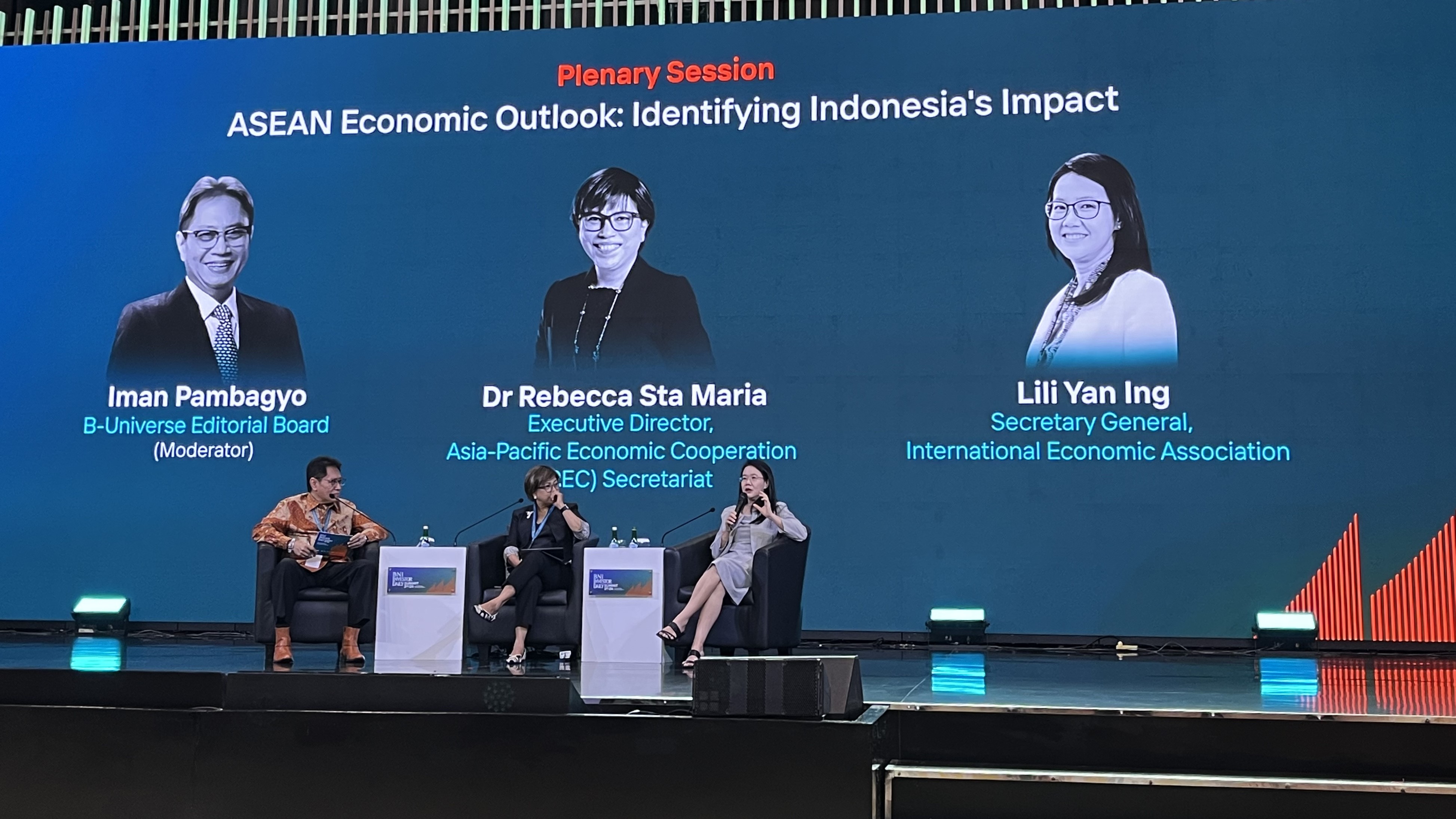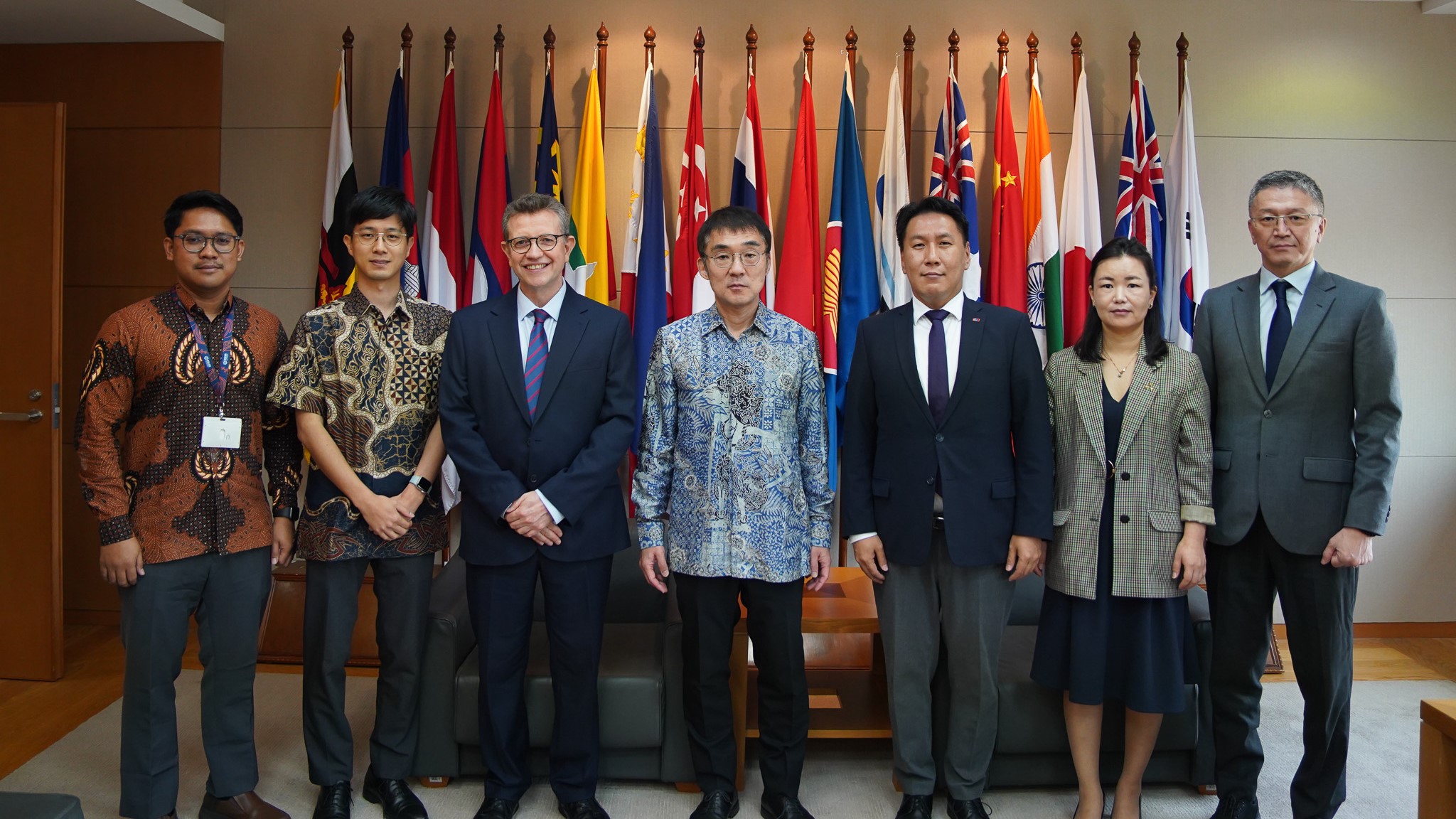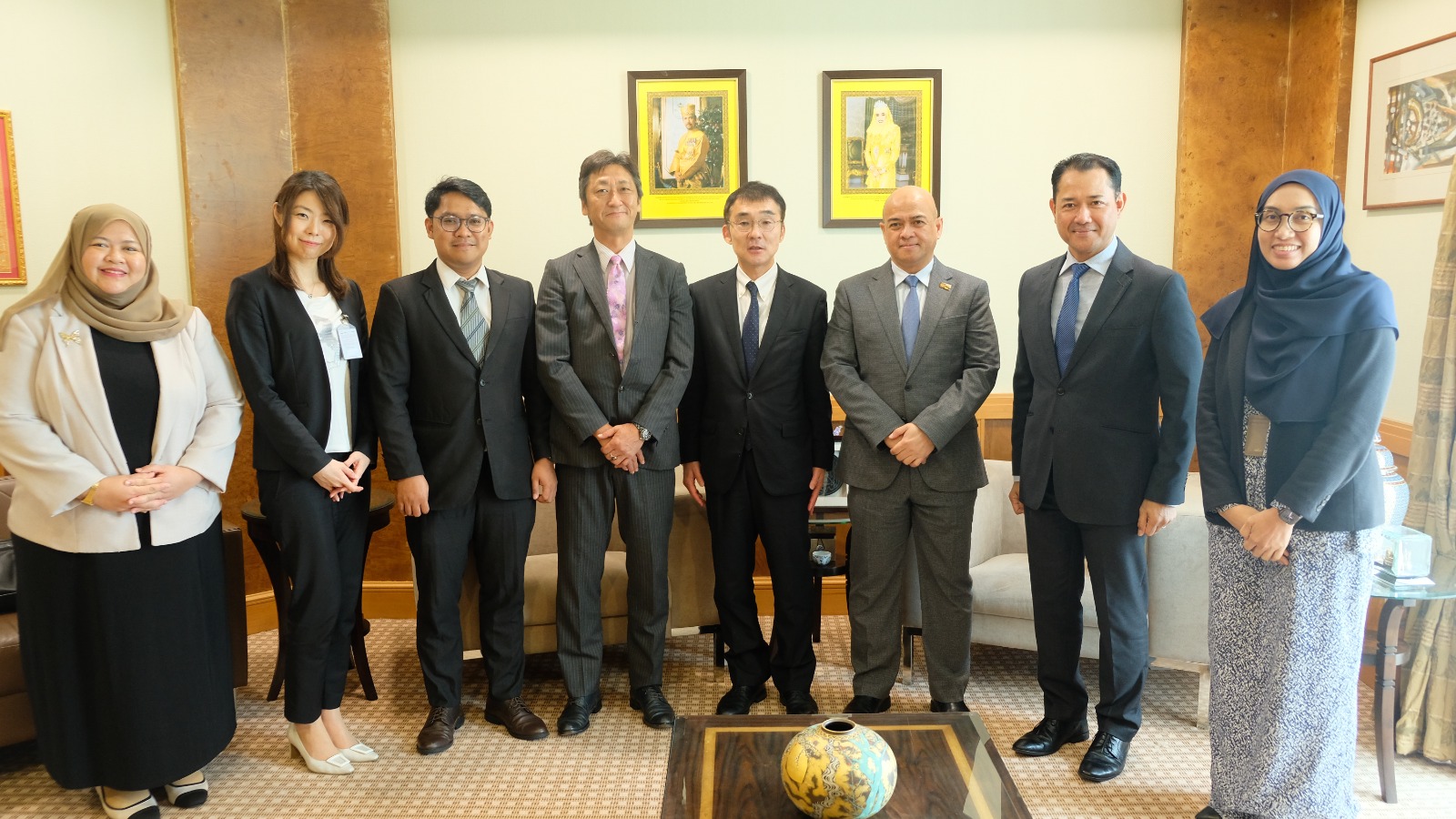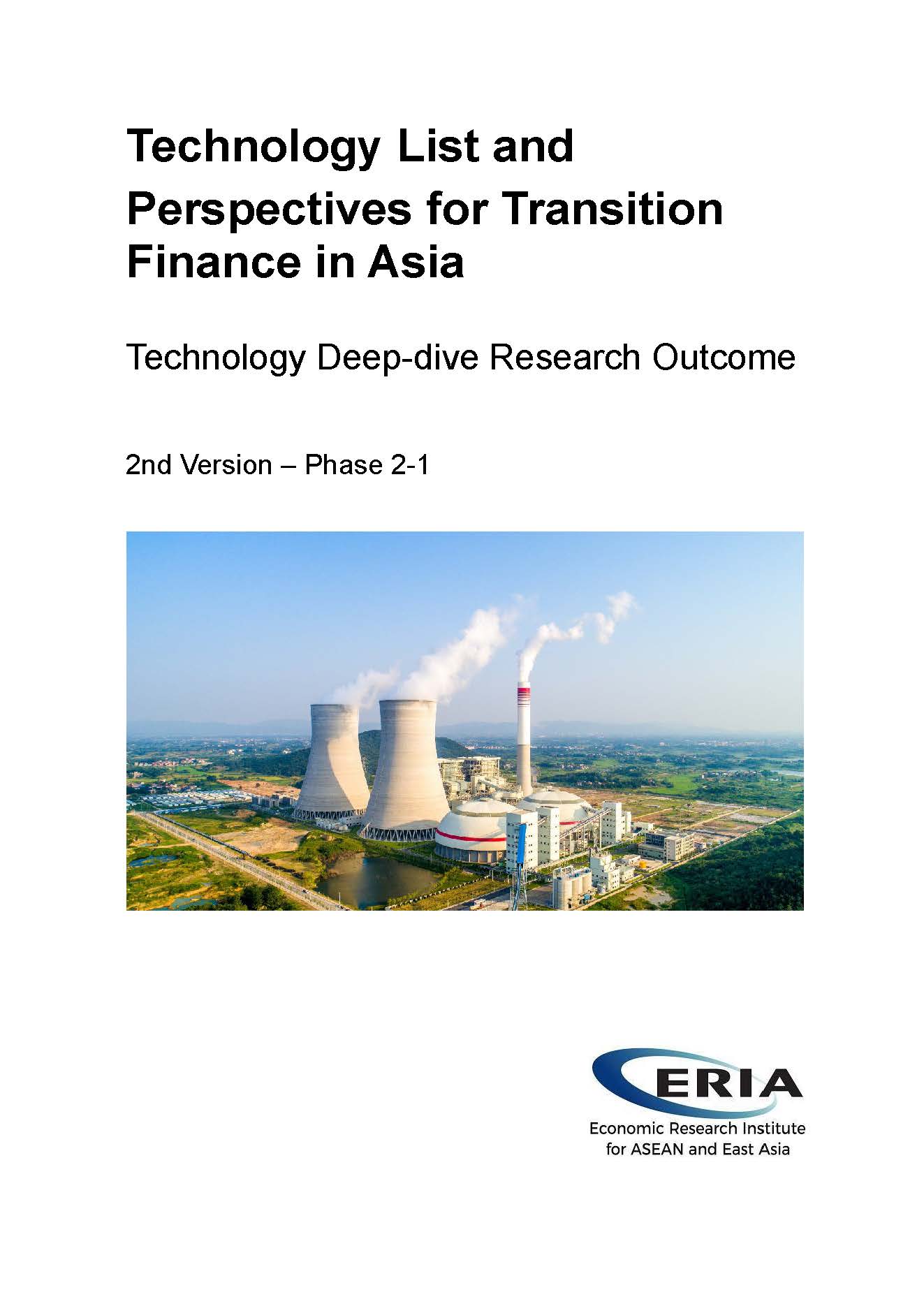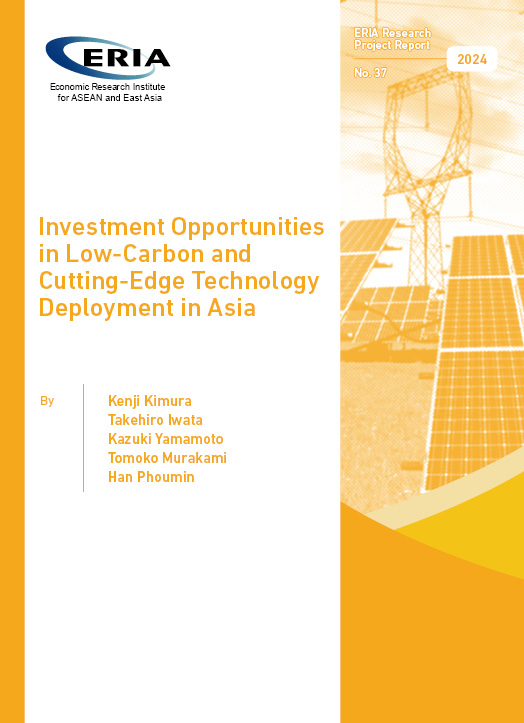ASEAN in the Global Economy
Share Article:
Print Article:
Jakarta, 9 October 2024: Dr Lili Yan Ing, Senior Economist at ERIA and Secretary General of the International Economic Association (IEA), delivered a speech on ‘ASEAN in the Global Economy’ at the BNI Investor Daily Summit, held at the Jakarta Convention Center from 8 to 9 October 2024. The event was inaugurated by President Joko Widodo and closed by President-elect Prabowo Subianto.
Dr Ing began by highlighting ASEAN’s rising significance in the global economy: ’When ASEAN was founded in 1967, it was a US$24 billion economy. Today, ASEAN is the world’s fourth-largest economy with a GDP of US$4.1 trillion, behind only the US, China, and Germany.’ She noted that in 2023, ASEAN accounted for 7% of global trade, 5% of global manufacturing value-added, and attracted 17% of global foreign direct investment (FDI). ASEAN’s growing prominence has positioned it as a key trading partner for major economies, ranking first with China, second with Japan, third with the Republic of Korea, and fourth with the US.
Dr Ing outlined the economic shifts over the past 5 decades, noting how global governance was once dominated by developed nations (primarily the G7) until the early 1970s. Since then, emerging economies – such as China, India, the Republic of Korea, and Southeast Asia – have expanded their shares in global output, trade, manufacturing, and FDI. She emphasised that this shift was not due to a slowdown in developed nations but rather the rapid rise of emerging economies. This transformation was driven by structural changes in industries and technology, increasing productivity and human capital. Dr Ing also pointed to the role of infrastructure and strong institutions in reducing transaction costs and facilitating economic growth. Successful governments in these regions, she explained, turned latent comparative advantages into real ones, leveraging late-comer advantages in industrialisation and technological catch-up.
Dr Rebecca Sta Maria, Executive Director of APEC, who shared the session with Dr Ing, focused on the need to strengthen economic cooperation amongst APEC members. She outlined three main priorities: trade and investment liberalisation, business facilitation, and economic and technical cooperation (ECOTECH). Dr Sta Maria called for reducing tariffs and non-tariff barriers to promote job creation and growth and advocated for working towards a Free Trade Area of the Asia-Pacific (FTAAP). She stressed the importance of simplifying business processes, ensuring inclusion of small firms, women, and youth, and building technical capacity to drive sustainable growth across the region.
In her closing remarks, Dr Ing urged ASEAN to prepare for the prolonged US–China trade tensions, which have expanded into technology, strategic industries, and security. She warned that these tensions could slow economic recovery and hinder development. ’ASEAN has always been a promoter of peace. Politically and economically, we have never taken sides, nor will we. We see the US and China as equally important, as well as the EU, Japan, South Korea, Palestine, Brazil, South Africa, Mozambique, and all nations. We treat all countries with respect as trading and investment partners, to grow and prosper together,’ Dr Ing affirmed.
The morning session on 9 October, focused on Trade and Investment, concluded with remarks from Indonesia’s Minister of Energy and Mineral Resources, Bahlil Lahadalia.
Economic Transformation and a New Economic Order
Robots and AI: A New Economic Era
Regional Integration and Non-tariff Measures in ASEAN
Non-tariff Measures Australia, China, India, Japan, New Zealand, Republic of Korea
